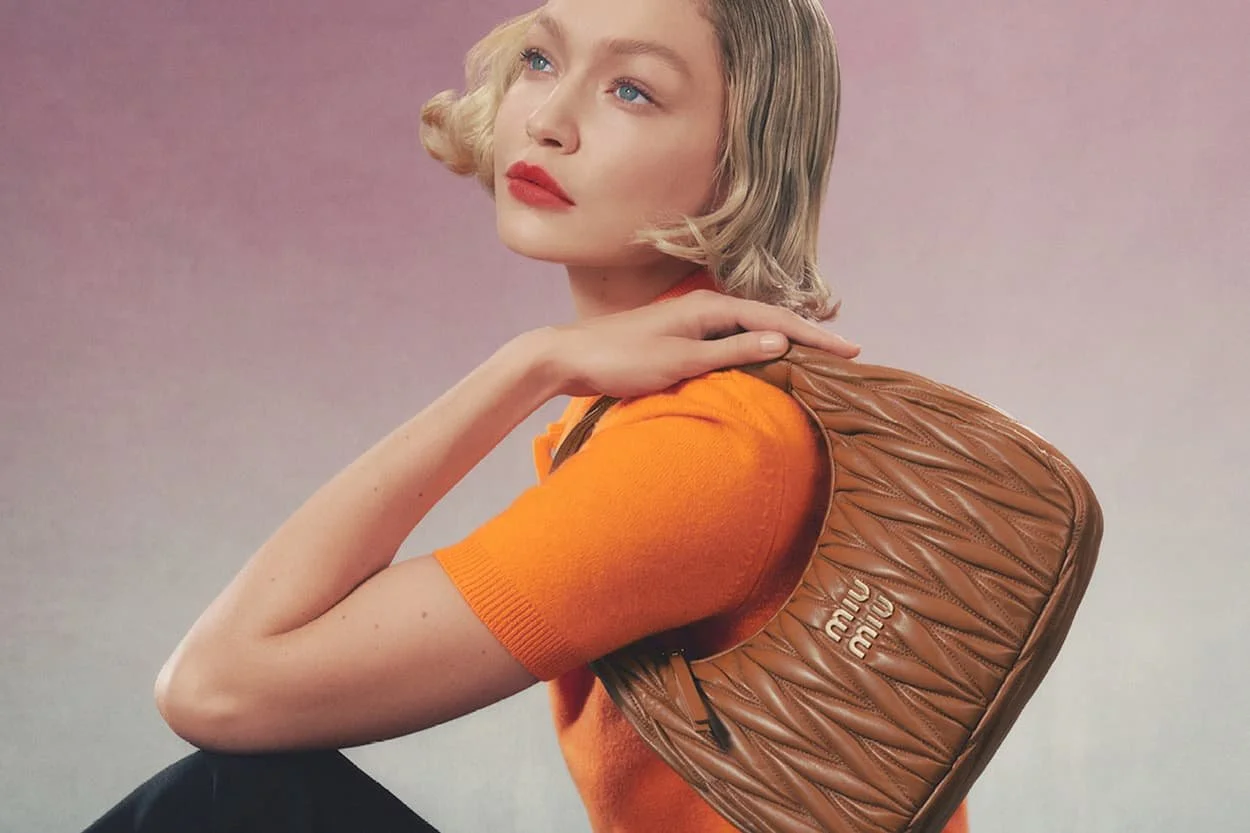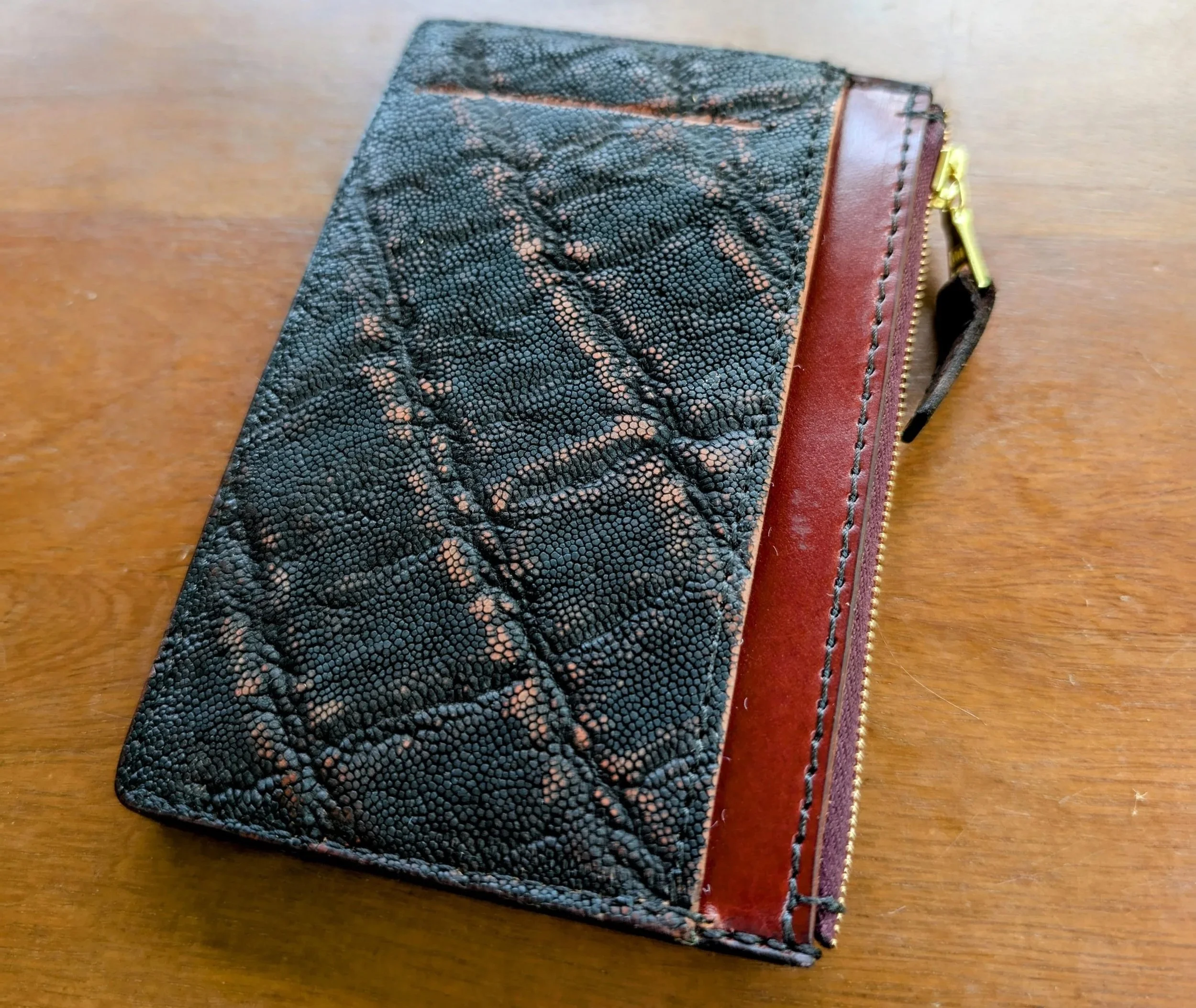The Miu Miu Problem: How Wisdom Kaye's Viral Meltdown Became a Blueprint for a New Philosophy
Miu Miu Handbags Spring 2024 Ad Campaign
The world of luxury is suffering from deep exhaustion. For generations, it seemed untouchable: a realm of heritage houses, rarefied ateliers, and objects designed to signal status through scarcity and price. Today, that veneer has dulled. A cultural threshold has been crossed, and the very grammar of luxury—exclusivity, rarity, and craftsmanship as a promise—has been hollowed out by the forces of scale and repetition.
The Moral Collapse of the Old Guard
This quiet crisis was laid bare in a shocking, very public way. In a viral video, luxury influencer Wisdom Kaye revealed a nightmare with a whopping $18,000 Miu Miu haul. The story was simple, and devastating: a new sweater and vest reportedly broke almost immediately. In an unbelievable turn, the replacement pieces Miu Miu sent also fell apart as soon as he unboxed them. This wasn’t just a bad customer service story; it was a cultural flashpoint.
The brand's immediate offer of a replacement rather than a repair spoke volumes. It signaled that these items were disposable, mass-produced products, more akin to fast fashion than to a timeless investment. This public disappointment with brands that are no longer "made to last" directly validates the growing critique of the old luxury order. The product simply no longer corresponds to the value it once promised, a symptom of The State of Exhaustion that plagues the industry.
This decline is the direct result of a fatal paradox. For most of the twentieth century, luxury’s magic was a model of rarity that preserved mystique through limited production. But when global conglomerates entered the equation, this model was first bent and then broken. The new imperative became mass expansion, quarterly growth, and global scale, as seen in the relentless pace of The Paris Fashion Week Paradox. Handbags once produced in limited ateliers were now churned out in factory-like volumes, yet still marketed as "artisanal marvels." The numbers tell a clear story: almost 80% of luxury’s growth between 2019 and 2023 came not from innovation or quality but from price hikes. The paradox was fatal: a model built on scarcity could not survive the logic of scale, creating The Scarcity Paradox that now devalues the very system it was meant to uphold.
A Quiet Rebellion: The Rise of Post-Luxury
Slipware Square Plate, England, Late 18th to Late 19th Century, The Japan Folk Crafts Museum
Into this vacuum emerges a new movement and a new logic: Post-Luxury Conceptual Functional Art (PLCFA), a term first coined by Christopher Banks. This is not simply another trend or a critique. It is a definitive blueprint for reinvention, a turn away from luxury as commodity and toward objects that matter because of their story, their resonance, and their use. It is a rebellion against the old order, proposing a different equation entirely: not possession, but resonance; not display, but dialogue; not opulence, but permanence.
Where traditional luxury finds value in conspicuous consumption, premium pricing, and recognizable branding, the new paradigm prizes intimacy, connection, and provenance. The relationship to the customer shifts from a simple transaction to an act of stewardship, where the buyer becomes a co-author of the object's narrative. And while old luxury relies on overt logos and brand codes, post-luxury embraces de-branding, authenticity, and elegant craftsmanship. It is a philosophical counter-proposition, a new cultural logic for value creation.
This philosophy does not arise from a single root; it is a global chorus. It doesn't begin in Paris or Milan but wherever function and meaning have always been one. It draws on the Japanese Mingei movement, which celebrated the beauty of humble, everyday objects and finding value in what was useful and imbued with cultural meaning. It also references India's craft modernism and the seamless connection between art and function long understood across Africa. The objects become vessels of memory.
The Object as a Vessel of Meaning
Master tailor at work
In this new paradigm, an object is not an accessory or a commodity. It is an artifact and a vessel of meaning. Its value is not tied to price or a brand name but to its story, resonance, and use. Each piece is a material manifestation of an intangible narrative, much like the work of a modern tailor as a cultural synthesizer. The power of an object lies in its provenance, an intimate history of noble origins and the master hands that gave it form. This verifiable lineage separates an object from a mere product.
The core tenet is the transformation of the consumer's role from a passive buyer to a steward who enters a covenant with the object. This means the customer’s personal story becomes inextricably linked to the object’s story, which makes the object’s value non-commodifiable on a public market. It's tied to a private, co-authored narrative that cannot be replicated. This value is not a static history but a “living history that deepens long after any maker's mark has faded.”
The New Exclusivity: The Poetics of Possession
The genius of this philosophy isn't in a marketing trick, but in its complete redefinition of status. The old luxury sold status through price and brand; this new paradigm sells status through access and personal connection. It is a quiet, discerning counterpoint to the over-the-top display of wealth that has come to define the luxury market.
This is why the model is based on an invitation-only basis. The relationship between the maker and the steward is a deeply intimate exchange, not a mere transaction. The true status symbol is not the object you bought, but the fact that you were invited to participate in the "covenant" and dialogue. It is a subtle and potent form of intellectual exclusivity, a deliberate resistance to the mass-produced mindset of old luxury. This new model proposes that an object's value isn't on a price tag; it's in a shared story that cannot be bought or replicated.
This philosophical approach draws on a number of intangible concepts that inform its tone and perspective. It embodies the French L'Art de Vivre (the art of living) and the Yoruba principle of serene composure, Itutu. It channels the Japanese aesthetic of subtle, imperfect beauty, Shibui, which teaches that the most enduring luxury is not excess but presence. And it aligns with the Chinese wisdom of effortless action, Wu Wei, where the greatest works are born not from strain but from attunement. This philosophy uses these ideas as a compass for how to orient one’s entire existence.
The Future of Luxury is Meaning Itself
The Indlovu Wallet from Christopher Banks’ Objects of Affection Collection
The decline of old luxury was inevitable. Its foundational promises of scarcity and permanence were hollowed out by the forces of scale and repetition. The logo lost its spell, the boutique its aura, and the unboxing its thrill. What remains is not a collapse but a transformation.
The PLCFA philosophy provides a new blueprint for value creation. It reframes value entirely, insisting that the most valuable possession is not a thing but a meaning made tangible. It is not a trend to be owned but a philosophy to be shared, a global chorus that redefines luxury as the resonance available to all who engage with material, story, and care. This is the future of luxury.
Its legacy will not be in the objects it creates but in the questions it forces us to ask about what constitutes true value and how we define art. The objects teach us lessons of tenderness and repair. The truest luxury was never about what was owned but about what owned us: the stories, the memories, and the devotions that make a life not only adorned but alive.
Authored by Christopher Banks, Anthropologist of Luxury & Critical Theorist. Office of Critical Theory & Curatorial Strategy, Objects of Affection Collection.





